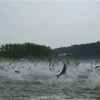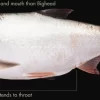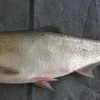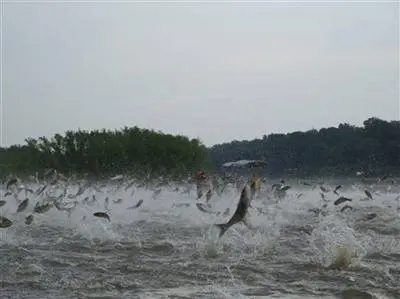X
CONTACT US
Great Lakes Center, SAMC 319
SUNY Buffalo State
1300 Elmwood Ave., Buffalo, NY 14222
wnyprism@buffalostate.edu
(716) 878.4708
SUBSCRIBE TO LISTSERV
FOLLOW US
CONTACT
Silver Carp
COMMON NAME:
Silver carpSCIENTIFIC NAME:
Hypophthalmichthys molitrixORIGIN:
AsiaDESCRIPTION:
The silver carp is a deep-bodied fish that is laterally compressed. They are silver in color when young, but fade to a green tinge along the spine as they mature. Tiny scales cover their body, except for the head and the opercles, which remain scaleless. They have a large mouth with pharyngeal teeth. Their eyes are situated far forward on the mid-line of the body and are slightly turned down.HABITAT:
Silver carp primarily inhabit large rivers. They can tolerate salinities up to 12 ppt and low dissolved oxygen (3mg/L). Silver carp feed on both phytoplankton and zooplankton.THREAT:
Silver carp are large fish, which can reach up to 100 lbs., can breed very rapidly. These filter-feeders can eat up to 40% of their body weight daily and are likely to out-compete native species. When startled by noise from boat and jet ski engines, they leap from the water. They have knocked boaters and jet skiers unconscious, and have even broken noses and windshields.MANAGEMENT:
Prevention is key in the management of silver carp. Organizations such as the Asian Carp Regional Coordinating Committee work to keep silver carp out of the Great Lakes and other precious water resources with tools such as electrical barriers and closures. The Army Corps of Engineers and others have been using environmental DNA, commonly referred to as eDNA, as a surveillance tool to try to find out if DNA from bighead or silver carp is present in certain waterways.
WNY PRISM PRIORITY:
Tier 1 - Raise Awareness
ADDITIONAL RESOURCES:
Silver carp is a prohibited species in New York State - for more information on Prohibited and Regulated Species, visit http://www.dec.ny.gov/animals/99141.html.
NYS Prohibited and Regulated Species - Part 575:
PATHWAYS OF INVASION:
REGIONAL DISTRIBUTION:
Not Present





